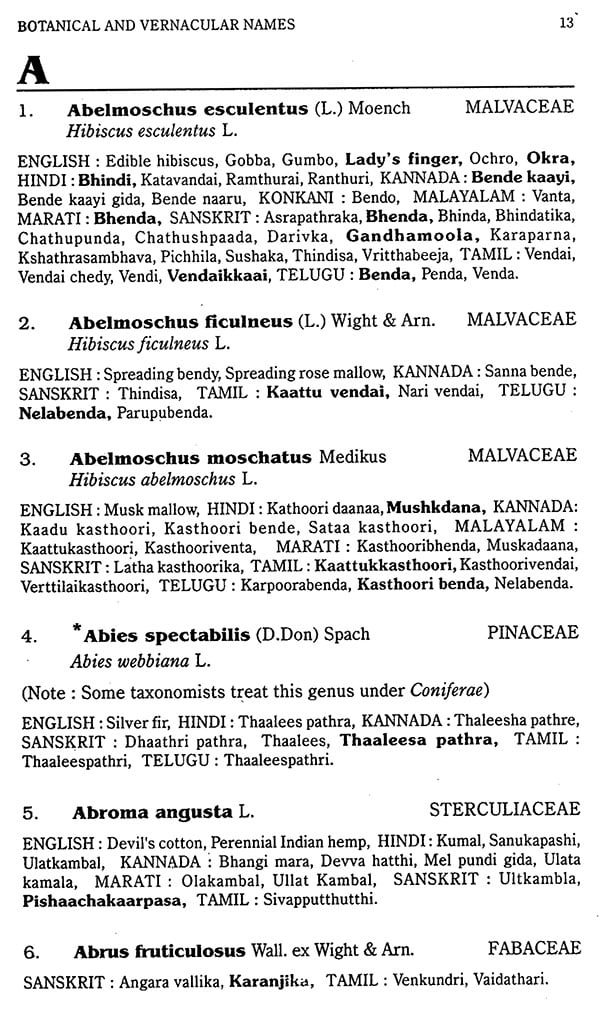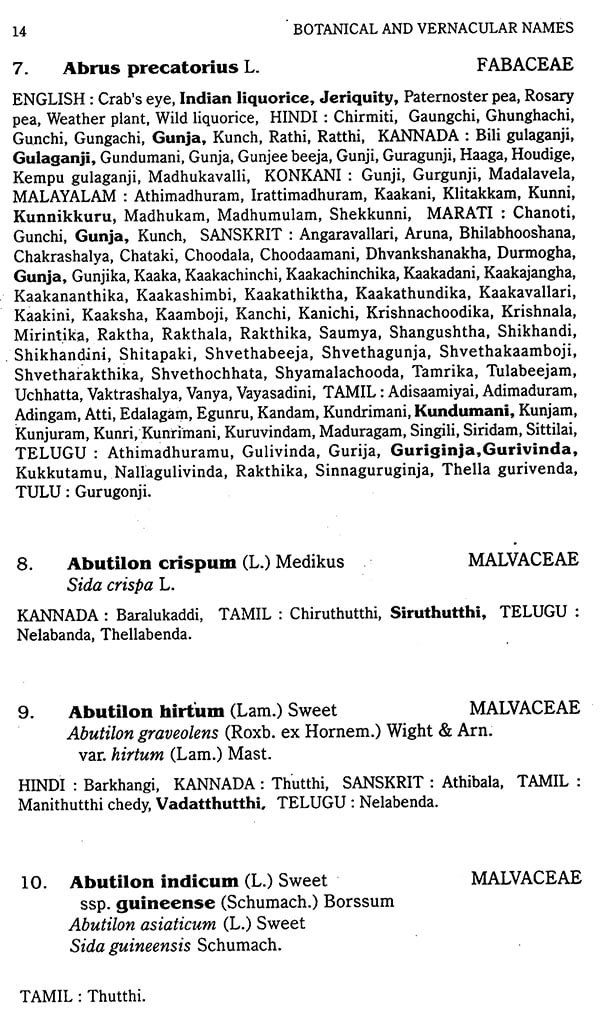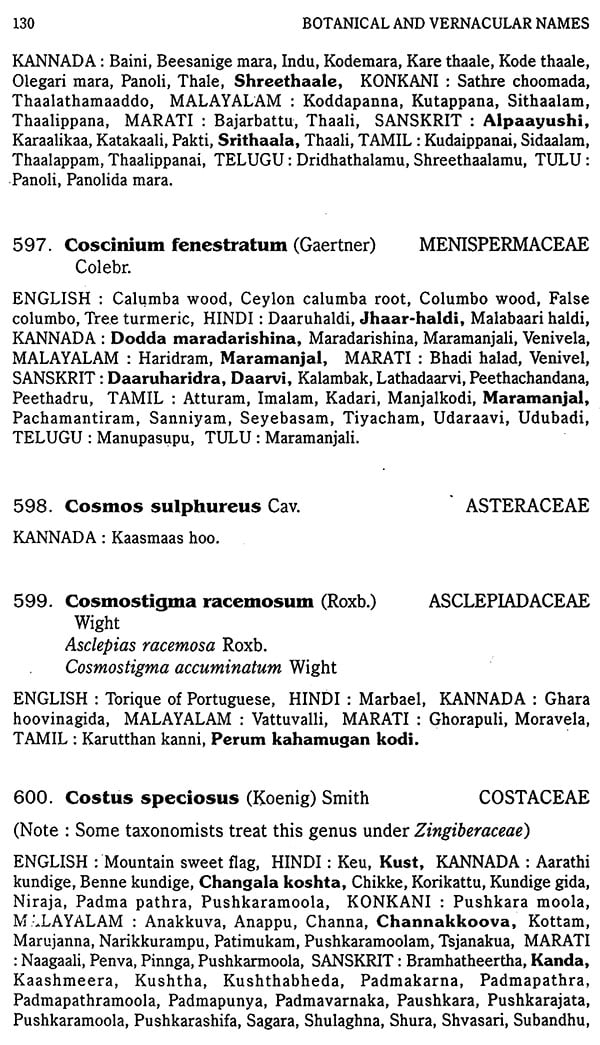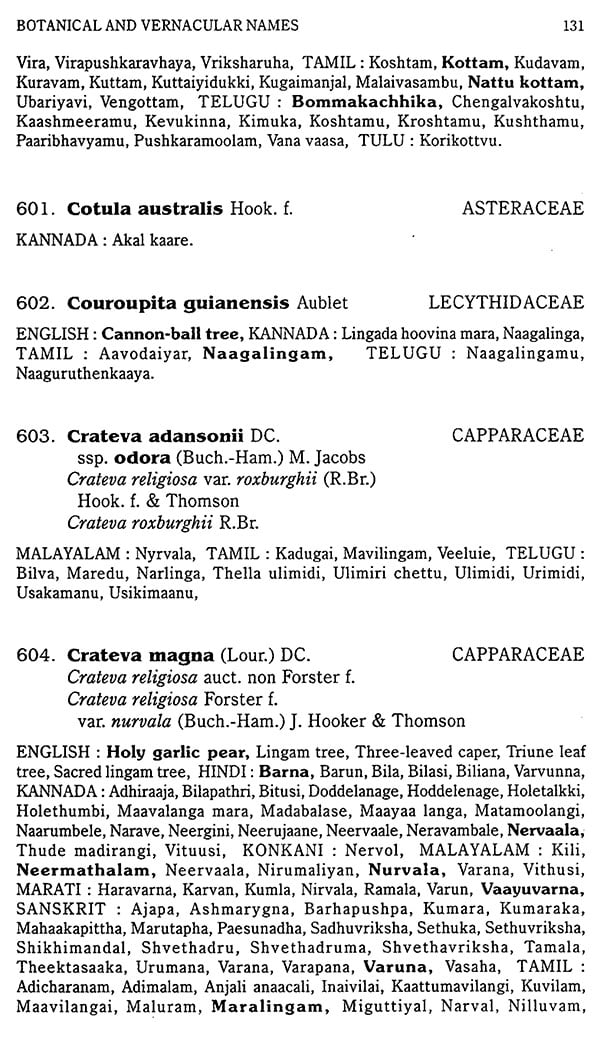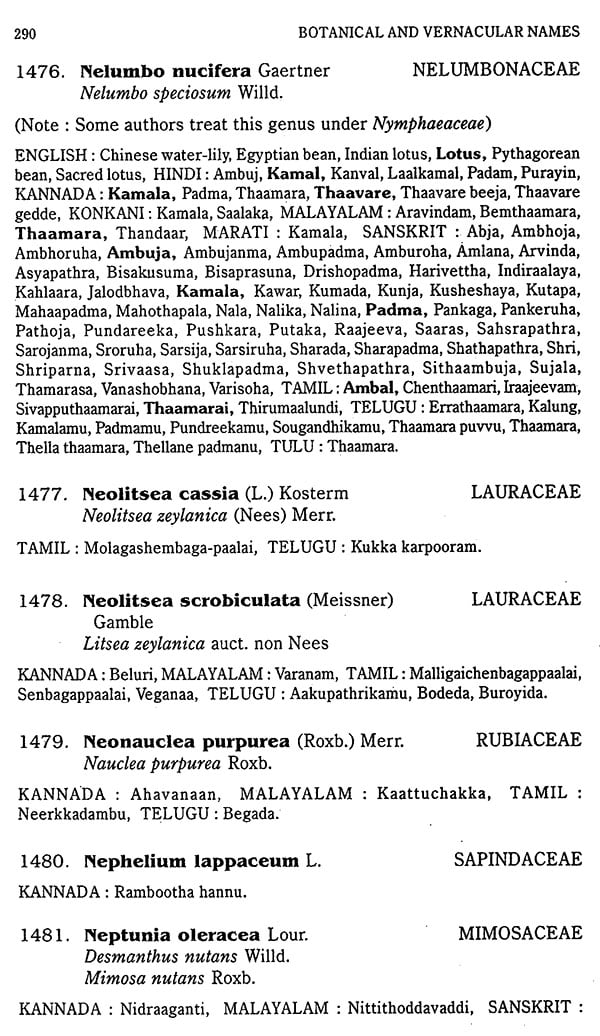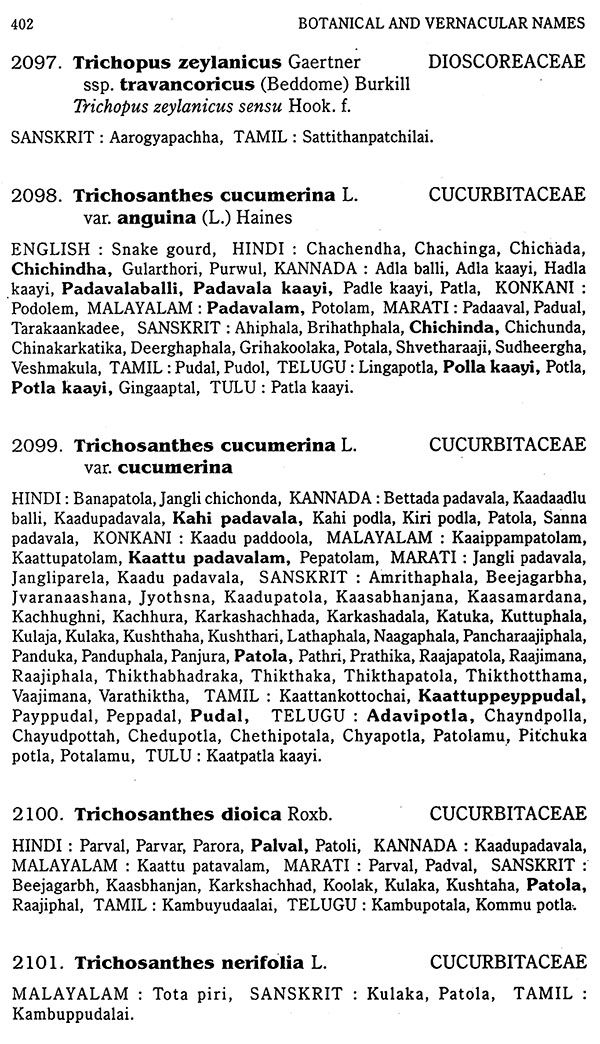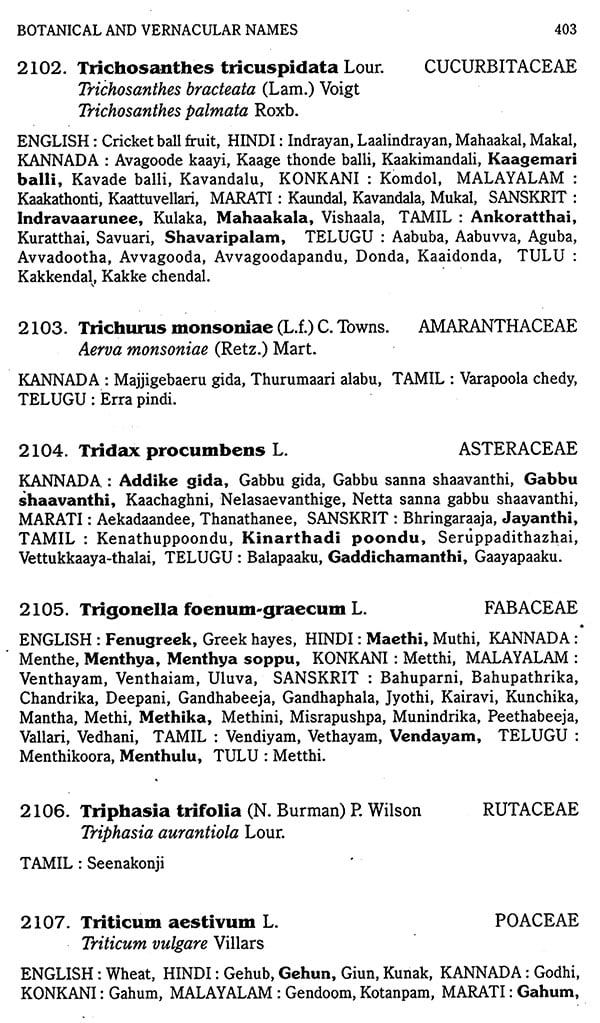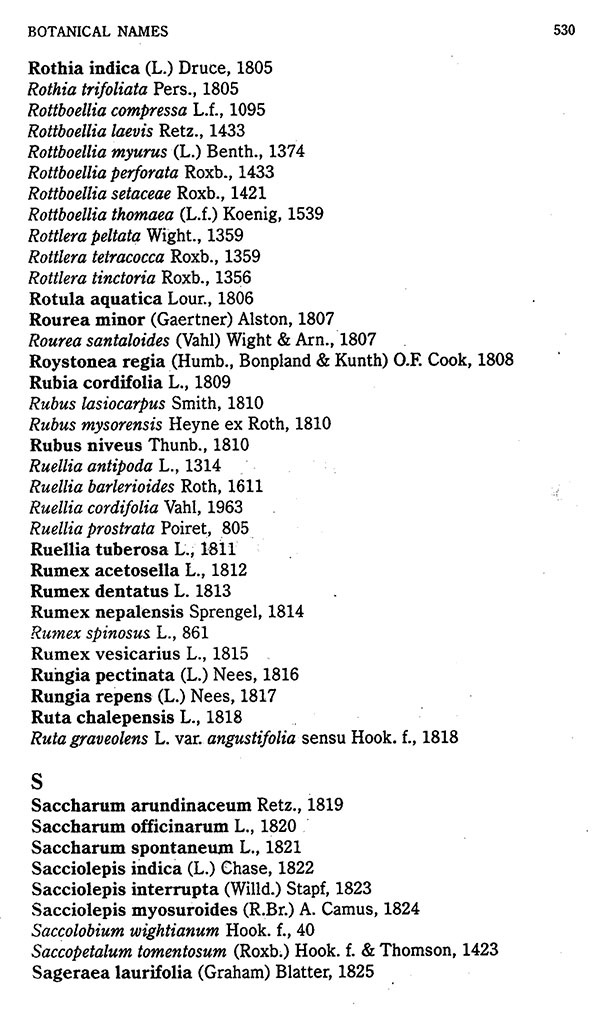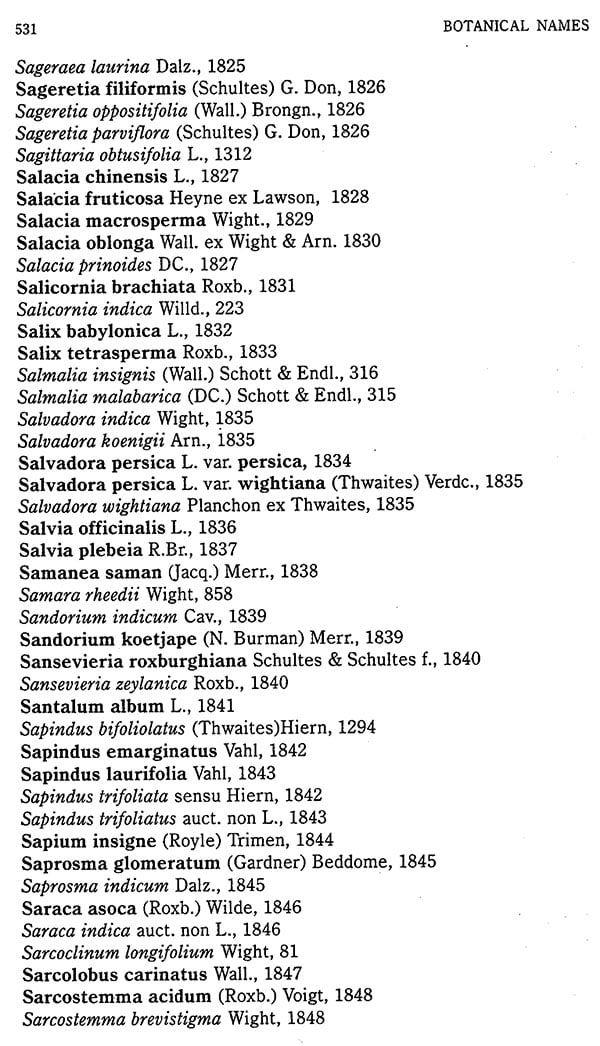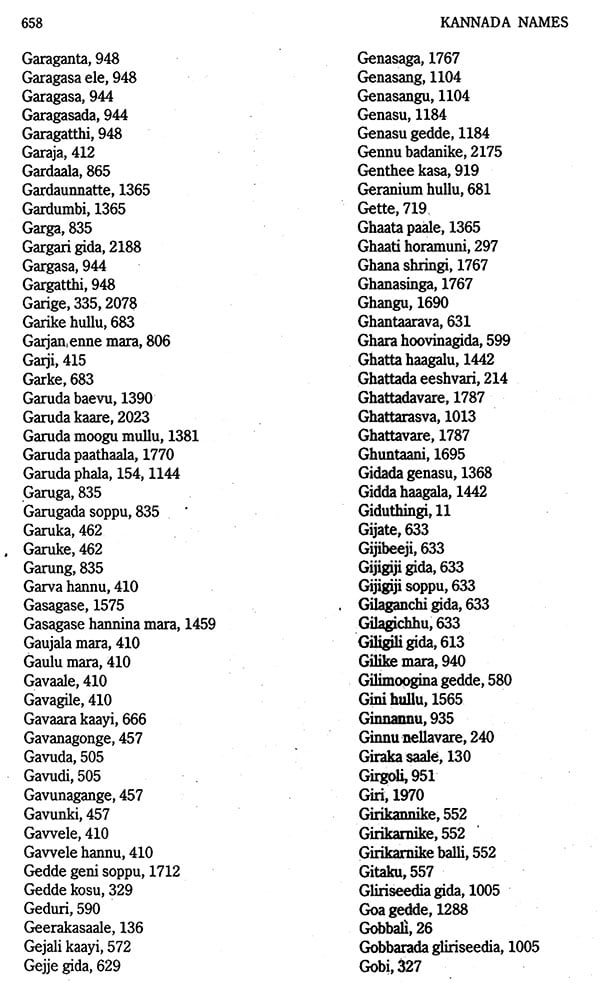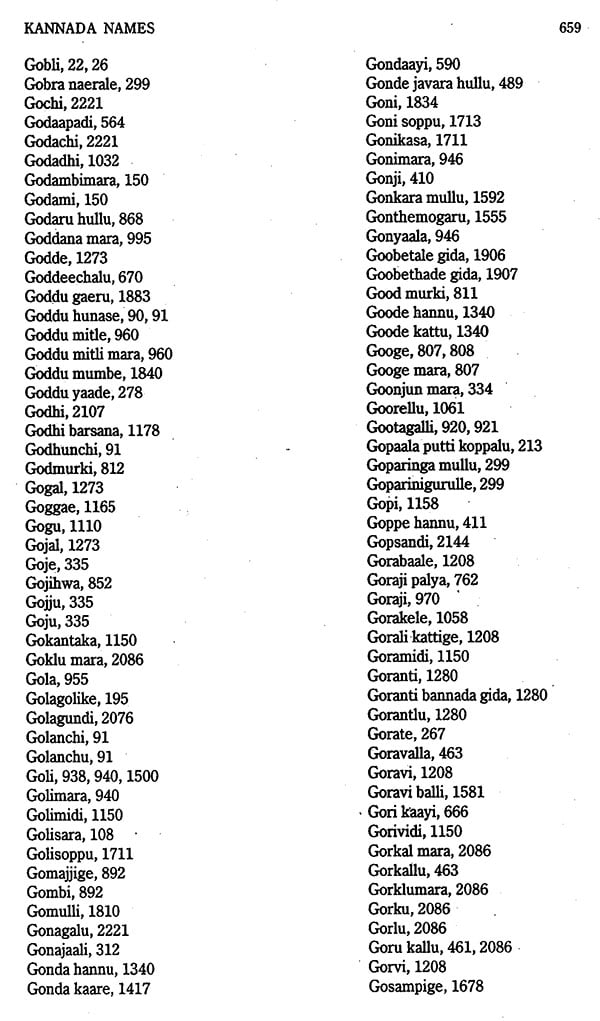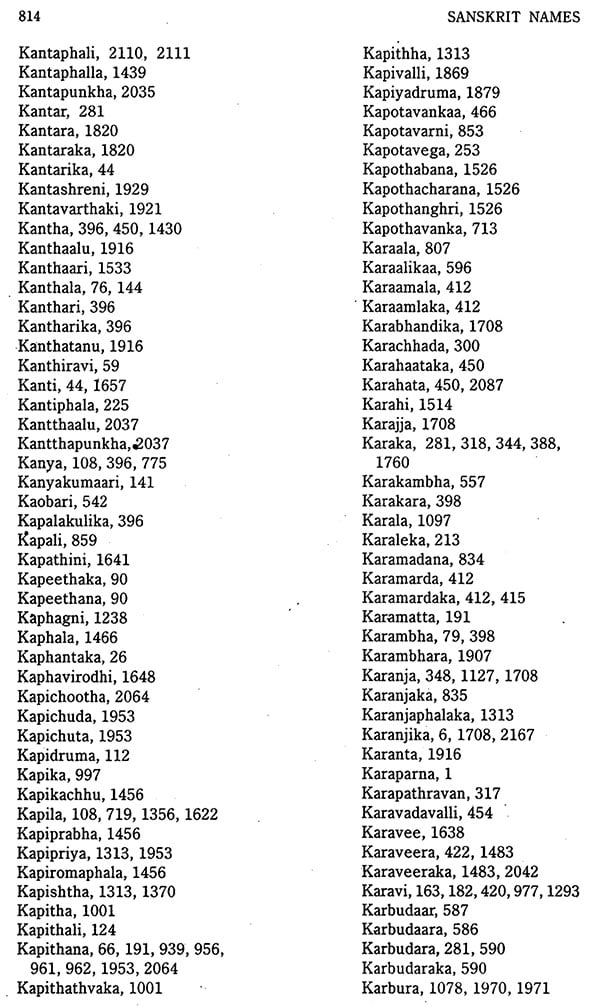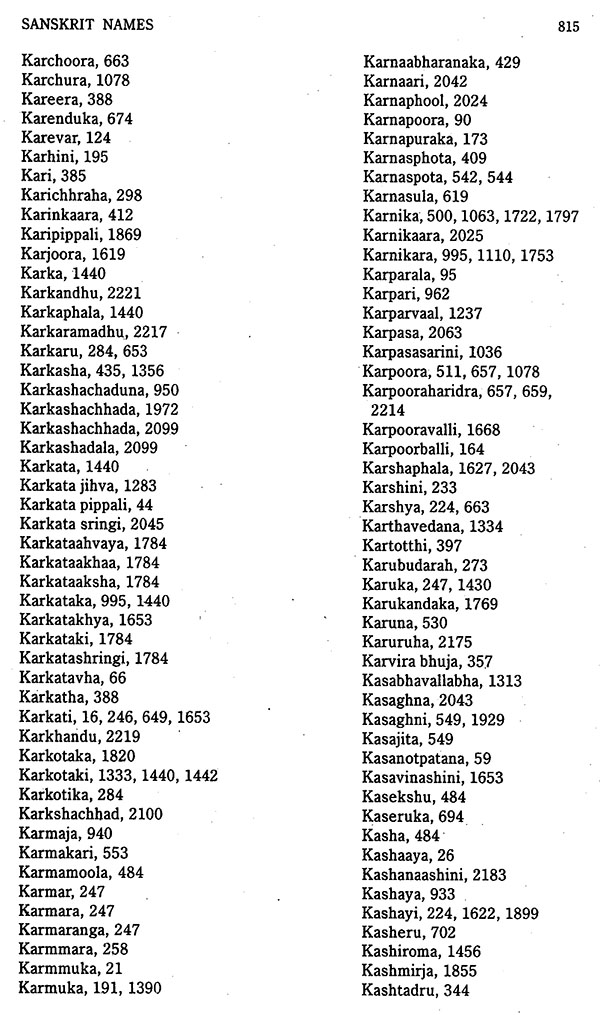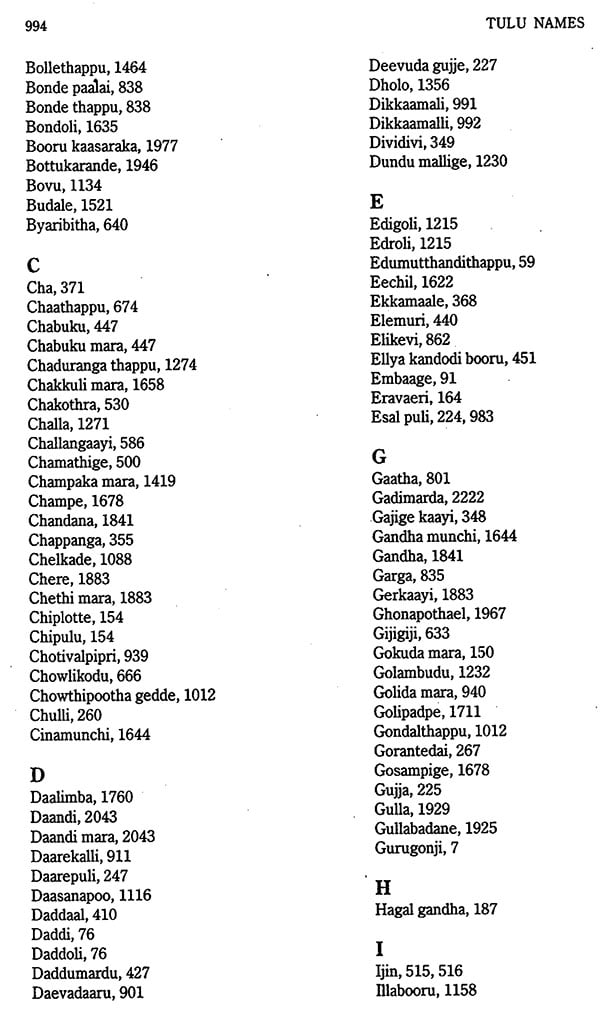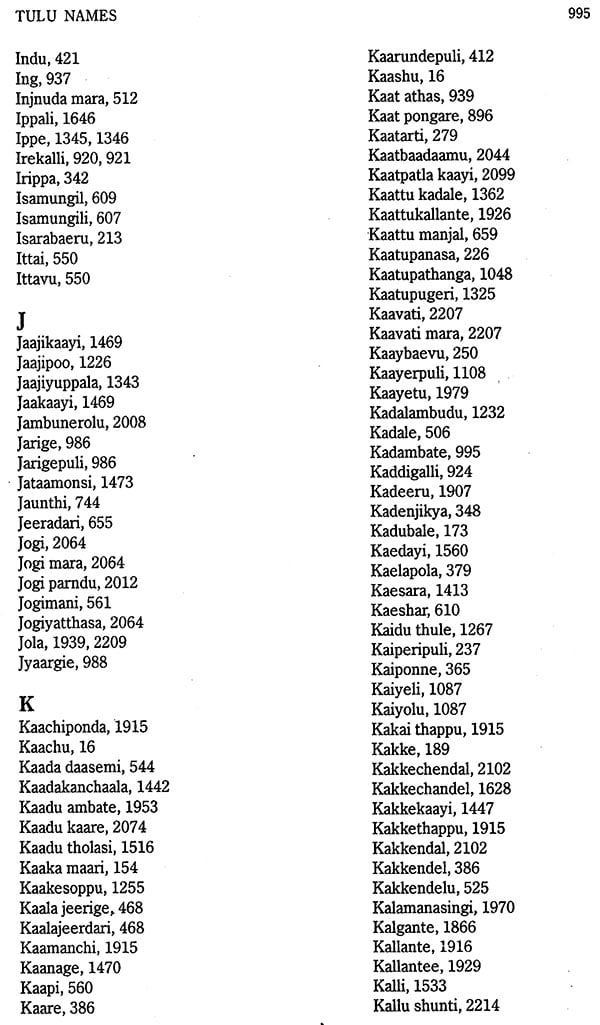
Botanical and Vernacular Names of South Indian Plants
Book Specification
| Item Code: | NAX311 |
| Author: | Magadi R. Gurudeva |
| Publisher: | DIVYACHANDRA PRAKASHANA |
| Language: | English |
| Edition: | 2001 |
| ISBN: | 8190135805 |
| Pages: | 1004 |
| Cover: | HARDCOVER |
| Other Details | 9.00 X 6.00 inch |
| Weight | 1.24 kg |
Book Description
Dr.MAGADI R. GURUDEVA is a lecturer in Botany, Visveswarapura college of Science, Bangalore. He has drawn inspiration from his father Dr. C.R.Rangegowda, who was a M.L.A., and a Homoeopathist. He has a multifaceted personality. He has many literary and scientific works to his credit. His fascination for orchids led him to obtain a Doctoral degree on them from the University of Bangalore.
He has penned many poems and also drawn cartoons a rare combination. He is a good artist with a flair for photography. This book is a testimony of his commitment towards plants.
The importance of plants is realised today in the best way by man than at any other time. Several important fileds like Bio-diversity, Food and Agriculture, Ecology, Environment and Health to name a few are all plant related disciplines. It has thus, become inevitable to be familiar with the plants surrounding us. Plants are recognised by man to begin with, in his own vernacular or folk name. In a country like India, where diversity exists at its peak, several communities live along the length and breadth of the land. The plants surrounding these diverse communities and used by them are recognised in their own language providing a vernacular or folk name. Thus, one botanically known plant is known by a number of different vernacular or folk names. The value of recognising a plant with the help of a vernacular or folk name becomes apparent when the particular plant or drug is botanically identified and its usefulness to the society is established. Unfortunately, very limited literature exists where all such vernacular or folk names are available in one place. Hence, it is necessary to have Compendiums of Botanical and Vernacular names. In attaining this objective, the present book by Dr. Magadi R. Gurudeva is a welcome addition. He has strived hard to compile the different vernacular names found scattered in the literature and correlate them with the correct botanical name, making it user friendly both to a layman and as well as for scientists. While I take this opportunity to congratulate Dr. Gurudeva for bringing out this useful compendium, I am confident that all plant lovers will derive benefit from this publication.
Plants constitute an integral part of human life. Every moment of man's life is influenced by them. Ever since man understood the importance of plants, he started grouping them into edible, non-edible, medicinal, non-medicinal, poisonous, non-poisonous etc. and naming them to recognise each individually from the language he is familiar with. Thus, to day the most useful plants have their names derived from the regional languages, popularly called vernacular names.
- Vernacular names of plants do not constitute a method. Each name is a law unto itself; it may originate without reference to any other name; it may be an old folk-name or a chance appellation; it may be a degenerated form of another word. It may be a translated word from another language. In certain cases Latin generic names have become vernacular names.
Vernacular names are not universal names; they are applied indiscriminately to genera, species and varieties. They lack precision and not only avoid relationships but many of them suggest false kinship. It is therefore, suggested to reject the use of vernacular names and emphasize the adoption of botanical names in scientific investigations. However, it cannot be denied that many of the commonest and most useful plants are recognised by definite vernacular names. Farmers, foresters, gardeners, horticulturists and laymen still use vernacular names when dealing with plants in their day to day life. To cater to their needs the present compendium is prepared.
In this compendium botanical names of plants occurring in South India have been arranged alphabetically and numbered serially. Botanical names which contain an asterisk sign (*) indicate that these plants do not occur in South India but have South Indian vernacular names.
Botanical names are followed by relevant synonyms in italics and name of the family to which they belong in capital letters. Botanical names found ifi earlier literature like Useful Plants of India, The Indigenous Drugs of India, Indian Materia Medica etc., are retained as synonyms, if different from the valid botanical name to facilitate the user to correlate these names found in these literatures with the present botanical names.
Effort has been made to update the nomenclature of plants, however, some plants still appear under old names to avoid confusion.
Each botanical name is correlated with one or more vernacular name from English, Hindi, Kannada, Konkani, Malayalam, Marati, Sanskrit, Tamil, Telugu and Tulu languages. Widely used vernacular names are highlighted in bold letters. In vernacular names several varients in spellings of the names are in usage due to the difference in pronounciation, for e.g. Datura metel L. : (in Kannada) Datthoora, Datthoori, Dathuri, Dhatthoora, Dusthoori, Duthura, Duthuri etc. In such cases selected common names are given.
Appendix-I provides the full name of the authors of plants included in the compendium. Appendix-II gives alternate names of selected families. The Bibliography covers the literature referred to.
A separate index has been tabulated for Botanical names, Families, English, Hindi, Kannada, Konkani, Malayalam, Marati, Sanskrit, Tamil, Telugu and Tulu names to facilitate the search of Botanical names in the compendium.
This compendium is dedicated to my professor Late Dr. D.A. Govindappa, Head of the department of Botany (Retd.), Mysore and Bangalore University, as a token of my humble contribution for the inspiration and encouragement which I received from him.
It is my privilege to thank Dr. S.N. Yoganarasimhan, Senior Research Officer and Head of the Medicinal Plants Division, Regional Research Institute (Ayurveda), Bangalore, for his encouragement and writing the foreword. I sincerely thank Prof. A. Govindaraju, Principal, Prof. Muthe Gowda, Head of the department of Botany & Microbiology, Visveswarapura College of Science and Prof. H.N. Ramakrishna, Prof. (Smt.) K. V. Shantha Prof. (Dr.) Khalid Rasheed Khan, all Ex Principals of Visveswarapura College of Science, Bangalore for their constant encouragement and support. I also thank my friends, colleagues and my family for their help rendered during the preparation of this compendium. It is my pleasure to thank Kumari Yogitha and Smt. Lalitha of Little Graphics, Bangalore for their DTP work; Messers Divyachandra Prakashana, Bangalore, who richly deserve appreciation for undertaking to publish and print this compendium.
